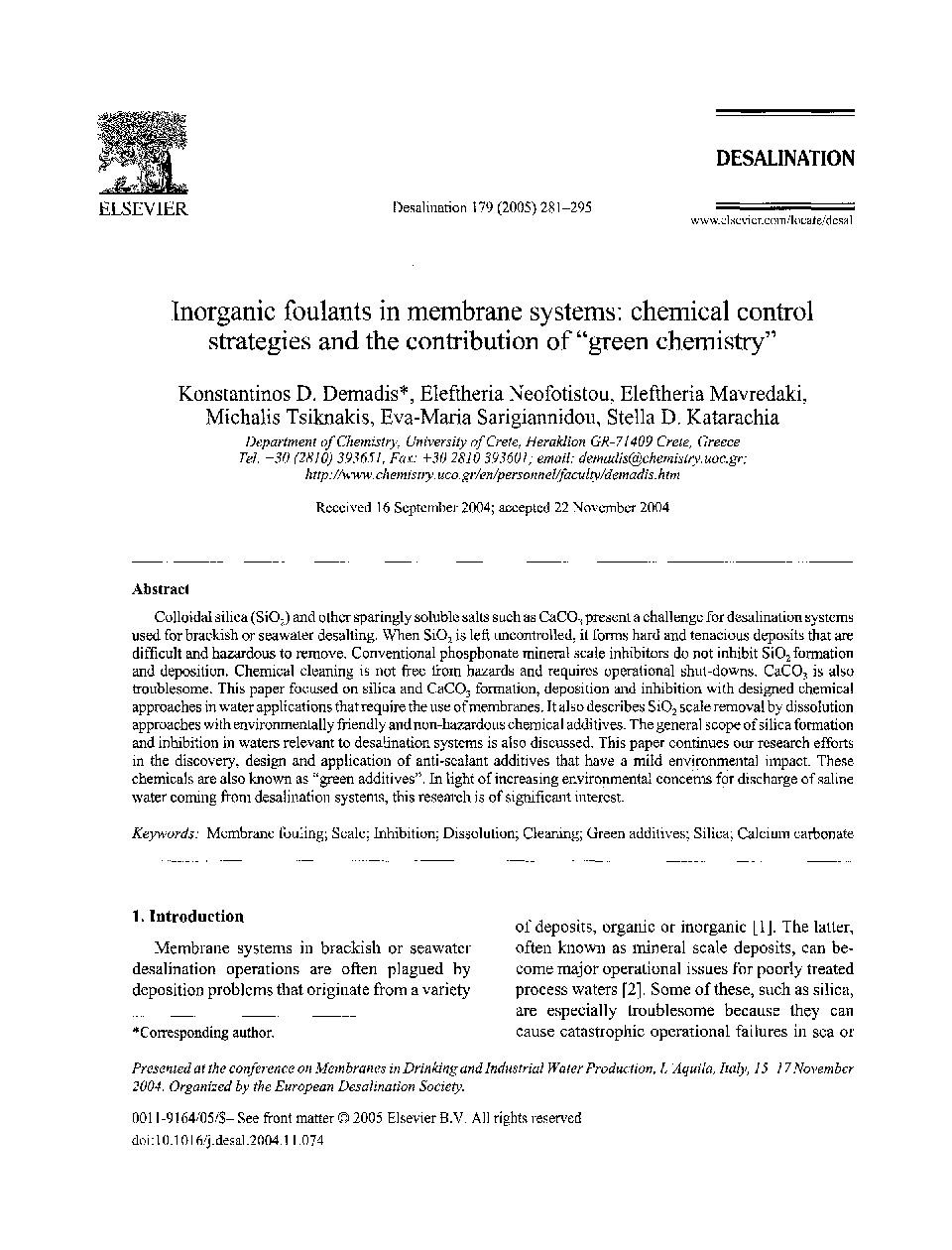| Article ID | Journal | Published Year | Pages | File Type |
|---|---|---|---|---|
| 9681112 | Desalination | 2005 | 15 Pages |
Abstract
Colloidal silica (SiO2) and other sparingly soluble salts such as CaCO3 present a challenge for desalination systems used for brackish or seawater desalting. When SiO2 is left uncontrolled, it forms hard and tenacious deposits that are difficult and hazardous to remove. Conventional phosphonate mineral scale inhibitors do not inhibit SiO2 formation and deposition. Chemical cleaning is not free from hazards and requires operational shut-downs. CaCO3 is also troublesome. This paper focused on silica and CaCO3 formation, deposition and inhibition with designed chemical approaches in water applications that require the use of membranes. It also describes SiO2 scale removal by dissolution approaches with environmentally friendly and non-hazardous chemical additives. The general scope of silica formation and inhibition in waters relevant to desalination systems is also discussed. This paper continues our research efforts in the discovery, design and application of anti-scalant additives that have a mild environmental impact. These chemicals are also known as “green additives”. In light of increasing environmental concerns for discharge of saline water coming from desalination systems, this research is of significant interest.
Related Topics
Physical Sciences and Engineering
Chemical Engineering
Filtration and Separation
Authors
Konstantinos D. Demadis, Eleftheria Neofotistou, Eleftheria Mavredaki, Michalis Tsiknakis, Eva-Maria Sarigiannidou, Stella D. Katarachia,
